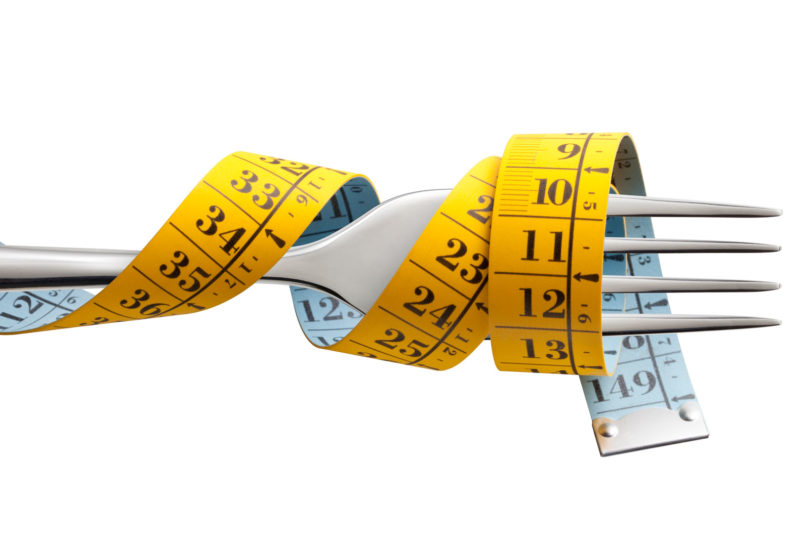The new year is just around the corner, which means your co-worker is probably talking about her upcoming juice cleanse, and your BFF is thinking about joining the Veganuary movement.
What steps are you going to take to start 2019 on the healthiest foot possible?
The good and bad news is that there are a seemingly endless set of diets out there, ones that promise to blast your belly fat, build better muscle tone or help you fit into your skinny jeans in just eight hours. But while many of them just seem unrealistic, others seem to fall radically short from an overall health and wellness perspective.
Not to worry! We’ve done the research to help demystify some of the most popular and trending diets out there and dish on critical issues like nutritional variety and portion control.
The 80/20 Diet
What you need to know:
It’s pretty straightforward: Fill your plate with nutrient-rich foods 80 percent of the time and enjoy your favorite slightly less nutritious foods the other 20 percent.
What you eat:
Followers should mostly be eating all things healthy — such as fruits, veggies, protein, healthy fats and legumes.
What you don’t eat:
Nothing is totally off the table, so to speak, as long as you are filling up on food that’s good for you 80 percent of the time.
Our take:
The truth is, there’s no hard and fast rule that works for everyone, but getting the proper balance of both exercise and your nutritional needs is key to nailing this diet. In reality, 80/20 is a good rule of thumb, but the number is going to be a little bit different for each person. For some it might be 60/40; for others, 90/10. Figure out the balance that works best for you.
The DASH Diet
What you need to know:
Repeatedly ranked the No. 1 diet by health experts, the DASH diet — or Dietary Approaches to Stop Hypertension — is designed for people who are trying to be extra mindful when it comes to managing their blood pressure.
What you eat:
Fruits, veggies, lean protein and legumes should make up the bulk of your plate.
What you don’t eat:
Avoid anything high in sugar or processed.
Our take:
While overall it’s a healthy plan, it has a fairly low suggestion for fat intake and recommends nonfat or low-fat dairy options, compared to the full-fat dairy many dieticians recommend.
The Dukan Diet
What you need to know:
Named after the French physician Pierre Dukan, this diet is heavy on protein — and do’s and don’ts. It identifies foods that contain the essential nutrients for our bodies that have tremendous benefits and are rich in protein, low in carbohydrates and fat.
What you eat:
It includes 100 approved foods, including 68 animal-based proteins (such as chicken, cod, eggs, beef, pork and fat-free dairy products) and 32 vegetables (think artichokes, bean sprouts, carrots, Brussels sprouts, kale and okra). Followers can eat as much of each as they want.
What you don’t eat:
Avoid foods that aren’t on that list.
Our take:
Though most of the approved foods are pretty healthy, it’s essentially a form of Atkins, and there is no real emphasis on the quality of ingredients (like organic or wild-caught). Also, there are many superfoods missing from the approved list.
The Fasting Diet
What you need to know:
Rather than having meals throughout the day, adherents of this diet follow a kind of feast-and-famine pattern, either eating normally on certain days of the week and drastically cutting calories on others or restricting their eating window each day.
What you eat:
“With 5:2 intermittent fasting, you eat normally five days a week and diet two days a week, cutting your calorie intake for those two days to a one-quarter of [your] normal level,” the diet’s website explains. “This means that on, say, a Monday and a Thursday you will eat 500 calories if you are a woman, 600 if you are a man.” In the 16:8 model, you fast for 16 hours every day (including sleeping hours) and then restrict your eating window to eight hours.
What you don’t eat:
Food intake is limited to certain days or times.
Our take:
It can work for people who work well with limits and very defined rules, but it is important that you listen to your body and work with your doctor to make sure you are getting enough nutrients and don’t end up slowing your metabolism.
The Keto Diet
What you need to know:
At its core, the nearly-100-year-old approach to eating is a celebration of healthy fats (from fish to coconuts). Unlike other low-carb diets, which focus on protein, a keto plan centers on fat, which supplies as much as 90 percent of daily calories. The keto diet forces your body to use ketone bodies, a type of fuel that the liver produces from stored fat, rather than glucose for energy.
What you eat:
Under the ketogenic diet you’re supposed to get a whopping 80 percent of your calories from fats, 15 from protein, and only 5 from carbs — a ratio that has shown to be effective for weight loss.
What you don’t eat:
Bread, rice, pasta, fruit, corn, potatoes, beans, baked goods, sweets, juice and beer all get the axe. A good rule of thumb is to avoid most sugars and starches. Whole grains like oatmeal don’t even make the cut.
Our take:
The keto diet can accelerate weight loss, but it can be hard to follow, and it can be heavy on red meat and other fatty and salty foods that are notoriously unhealthy. If keto seems right for you, try to embrace in a way that leverages the healthiest options, including fish, lean meats, healthy oils and fresh vegetables.
The Macrobiotic Diet
What you need to know:
Macrobiotic eating, which was popularized in the United States by Michio Kushi, has its roots in Japan. It favors eating a mostly plant-based diet of whole, cooked, organic foods and stresses the importance of reducing toxins. It was one of the first diets with a food-as-medicine philosophy and is still used today to lower disease risks and treat illnesses.
What you eat:
The diet is very similar to vegan and vegetarian approaches in that it includes fruits, vegetables, sea veggies and whole grains, but it also includes fish. Additionally, the regimen emphasizes the type of cookware you use to prepare your meals (glass, wood and ceramic) as well as cooking with organic ingredients.
What you don’t eat:
Followers avoid dairy, eggs, poultry and red meat, as well as artificial and processed foods. Veggies from the nightshade family, such as tomatoes or eggplant, are off-limits due to their impact on gut health.
Our take:
If you’re following it carefully, it’s an excellent option because there’s a focus on so many different foods. The downside is that it comes with a lot of rules, like which percent of your diet, by weight, certain food groups should constitute.
The Mediterranean Diet
What you need to know:
With its focus on good fats from fish and olive oil and antioxidants from veggies and wine, it’s been a very appealing choice far beyond the actual Mediterranean. Studies find it helps protect against bone loss, decreases the likelihood of heart disease and boosts longevity.
What you eat:
Think healthy European — lots of fruits and veggies, beans, nuts, olive oil and whole grains. (And yes, red wine, in moderation.)
What you don’t eat:
You don’t indulge in red meat, sweets, cheese, milk or potatoes, nor do you eat a lot of refined carbs.
Our take:
This really is a lifestyle, rather than a diet. It’s based on real foods and is heavily plant-based, with healthy fats and even wine. The only negative is that it doesn’t have a lot of hard and fast rules, so if you are a person who responds well to a prescriptive-style diet, you may prefer a different method.
The Paleo Diet
What you need to know:
The idea is to eat purely, emulating the eating habits of Paleolithic people and sticking with available-back-then staples. It’s a favorite of the CrossFit crowd.
What you eat:
The focus is on high-quality, grass-fed meats, vegetables and fruit, with a seasonal bent (so, squash in the winter and juicy tomatoes in the summer).
What you don’t eat:
Dairy, legumes, potatoes, grains and corn — or refined sugar and manufactured foods.
Our take:
There are many things to love about Paleo: it centers on real food, has an emphasis on quality ingredients and prioritizes lots of veggies and healthy fats.
If it feels restrictive at times, you may consider “Paleo-Plus,” which includes a bit of dairy, like Kefir or Greek yogurt a few times a week, as well as legumes, which provide fiber and antioxidants.
The RAW Diet
What you need to know:
This diet is all about plant-based foods that aren’t heated above 115–118 degrees to preserve their living nutrients, such as enzymes, minerals and antioxidants.
What you eat:
This diet is all about fruits and veggies, lentils, chickpeas, adzuki beans, mung beans and coconut in all forms, nuts (except peanuts) and superfoods.
What you don’t eat:
Followers avoid anything heated up.
Our take:
We love that this diet is produce-driven, but it’s incredibly difficult for many people to do exclusively because of the serious hassle-factor. A combination of raw food and cooked food is not only more practical, but there are some foods where the nutritional value goes up when you cook it.
The Whole30 Diet
What you need to know:
Founder Melissa Hartwig summarizes The Whole30 Diet as “a reset for your health, your habits and your relationship with food.” Followers weed out an extensive list of foods for one month and then slowly add them back in, seeing how exactly their body responds to different things.
What you eat:
Veggies, protein-heavy foods such as eggs, lean meat and fish all make the cut.
What you don’t eat:
Sugar, alcohol, dairy, quinoa, chickpeas, peanut butter and anything processed are all off-limits.
Our take:
With its focus on lean meats, lots of vegetables and healthy fats, it has good bones. It might be a diet that is hard to stick with forever, but it will definitely build habits towards living a healthy lifestyle.


